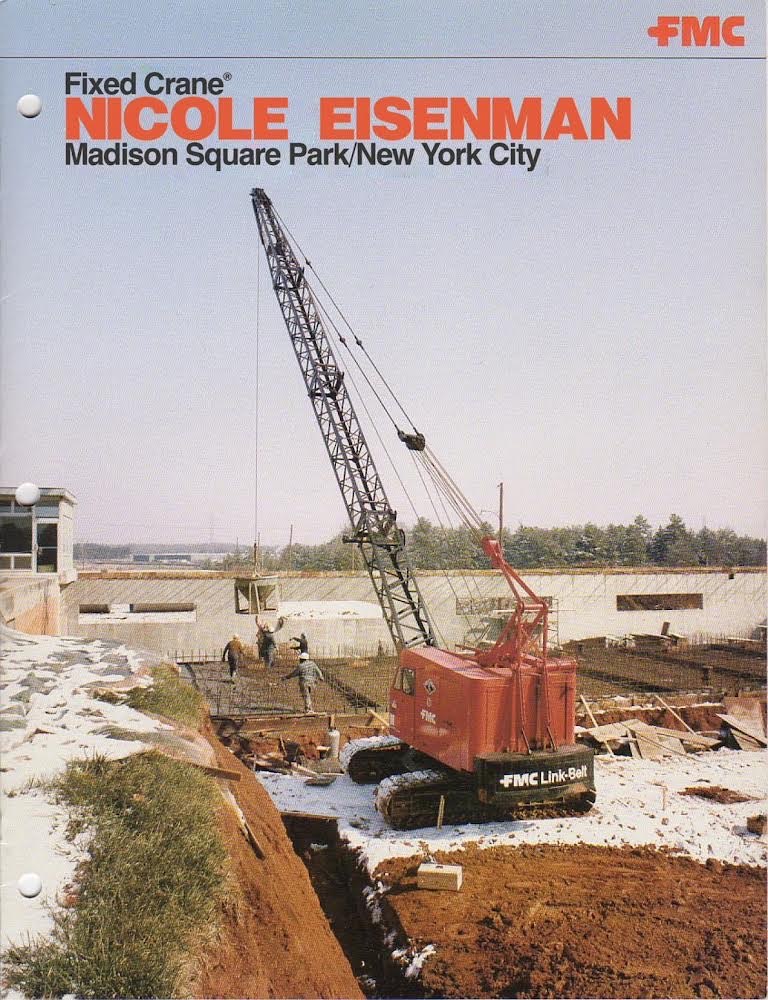

Photo credit courtesy of Madison Square Park Conservancy
October 24, 2024 – March 9, 2025
“Nicole Eisenman – one of the most influential artists working today — assembles a monumental public project for Madison Square Park that destabilizes familiar heroic objects associated with human achievement. Fixed Crane features a toppled industrial crane embellished with handmade sculptural objects. The work marks a significant moment in Eisenman’s practice, expanding her explorations of the twentieth-century concept of the “readymade,” created in 1916 by Dada artist Marcel Duchamp to elevate everyday, mass-produced objects to the status of an artwork, and pushing the boundaries of her work in figuration. The project is part of the milestone twentieth anniversary of Madison Square Park Conservancy’s art program.
Parkgoers can walk around the deflated machine, a mighty symbol of construction prowess and urban growth that now rests impotently on the park’s Oval Lawn. Rather than reach valiantly into the sky, the once imperious 1969 Link-Belt crane has capsized, provocatively challenging our notions of betterment. Turned on its side, the operator’s cab reaches nine-feet high; the tracks extend up twelve feet, and the boom stretches ninety feet. The artist upends an Edenic refuge from the city by placing a rusted relic of presumed advancement center stage. Eisenman questions cycles of progress in public space: how powerful cranes build skyscrapers–and, lately, “supertalls”–like those near Madison Square Park. In recent months, a towering wisp of an 860-foot-high structure has risen to eclipse views of the Empire State Building from in and around the park. Eisenman critiques New York City’s impulse for ever higher ascension, which advances some lives and compromises others, and alludes to how the human condition may be endangered by ongoing urban construction.
At the apex of the cab is a diminutive explorer. The figure waves a flag, here a symbol of surrender or of occupation. Sculptural bandages placed on the crane’s struts and boom are there to heal the fallen apparatus. A large foot wearing a Birkenstock sandal is caught under the treads; it is footloose no longer, an unexpected culprit as the kicker who capsized the crane. A solitary seated female figure, draped in a shawl, and bathed in the soft light of a chandelier, sits before a small cast-iron stove. She is now a vision (or a squatter), a glowing soul who recently found a haven for a wiener roast, skewering a sausage with a stick. The crane’s original counterweight and interior mechanisms become benches for seating as the artist daylights what was once hidden in the machine’s interior. Viewers can look at the fallen crane–once a commanding, necessary force for building, but now in stasis.”
Text by Madison Square Park Conservancy
For more information, click here.